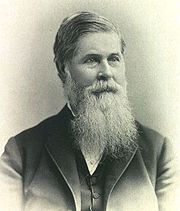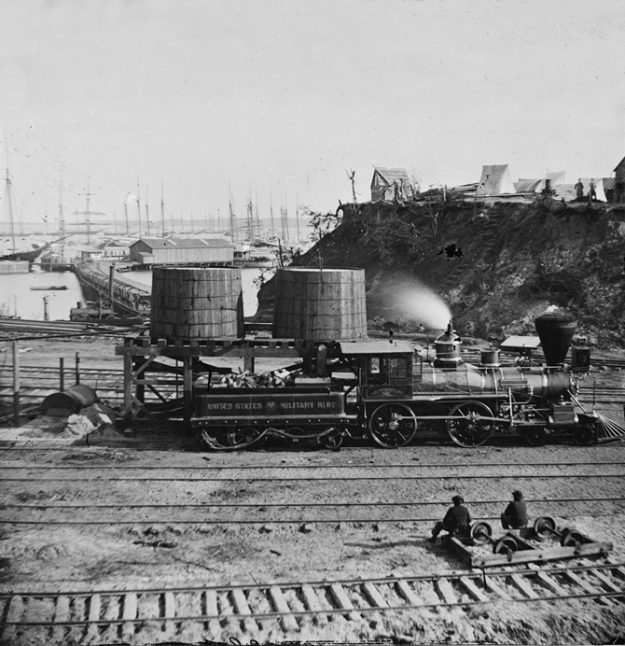Bonds of War: David Thomson ’08 on Financing the Civil War
By Tom PorterThe American Civil War cost the federal government more than $3 billion, and much of the money was raised from the sale of Union bonds. As well as relying on ordinary Americans to finance the war, a lot of investment came from overseas, as US securities became a global commodity during that era.

In a public lecture during the fall semester, historian David Thomson ’08 examined how the financing of the Civil War put the US financial system on the path to modernity.
Thomson, who is visiting assistant professor of history at Sacred Heart University in Fairfield, Connecticut, is currently researching a book on this subject.
You talk about how the collapse of Lehman Brothers in 2008 had “repercussions for our understanding of the Civil War.” What do you mean by this?
Many aspects of modern day finance and the investment banking world date back to the Civil War era. Today’s financial climate and the financial instruments we use are, of course, a far cry from the Civil War era, but it is important in my mind to see this link. When we tell the story of the collapse of 2008, for instance, we can tell it as the story of the gutting of the Glass-Steagall Act of 1933, the capture of the ratings agencies, and the power of financial instruments of mass destruction—mortgage backed securities, collateralized debt obligations, and credit default swaps—all of which ultimately brought the entire world financial system to its knees.
But a deeper history goes all the way back to the origins of American investment banking itself. Goldman Sachs, JP Morgan, Citi, and Lehman Brothers all grew to prominence in the American Civil War Era; all owe their precipitous rise to the war and war bonds. United States Treasury bonds are now considered the safest investment on the planet and a safe haven during times of economic turmoil—this was not always the case and its important to trace this transformation.
You quote a Confederate source saying: “The Yankees did not whip us on the field. We were whipped in the Treasury Department.” How true is this?
I’d say very true! The United States was operating from a comparative advantage as it already had a governmental infrastructure in place with the Treasury Department. In contrast, the Confederates needed to create this agency from scratch and then implement it as part of a new nation founded on the principle of limited central government—drastically hindering their ability to effectively collect and raise revenue for their cause. This led to rampant inflation in the Confederacy. So in essence, yes, they got whipped pretty good on that front. Furthermore, the Confederacy largely operated from a position of believing that cotton would be their saving grace, but this was a grave miscalculation on their part and it had dire repercussions.

Given that federal finances on the eve of war “were in complete disarray,” how did the government manage to instill enough confidence in its financial system to persuade ordinary people to purchase bonds, and pay for the war?
That’s the million dollar question—if you’ll forgive the financial reference. This is the issue I’m trying to more fully explore as I transition from the dissertation to the book. Previous scholars have emphasized the patriotic self-interest that came to be associated with war bonds as the chief reason behind their success. I think that is true in part, but I believe war time exigencies and the fundamental shift in the American financial infrastructure between the Legal Tender Act and the National Banking Act in no small part helped to facilitate the overall success of the bonds. When coupled with the brilliant marketing campaign put forward by Jay Cooke that only grew as the war progressed, confidence became the reality and enabled such widespread sales. It’s not the whole answer, but one I hope to build upon in the years ahead.
How much was the war financed by investors outside the US?
US securities became a global commodity during this period with high volume sales crossing the Atlantic to new buyers in England, France, the German states, Switzerland, Belgium, Russia, Austria, Ireland, the Italian States, and the Netherlands. (Even Cuban planters invested heavily, despite their slave-owning practices.) It’s hard to put an exact number on it because of the poor records for the secondary market, but during the war itself, I would say it’s safe to claim $400 million of Union bonds were purchased by international investors.
By the Reconstruction period a new financial order was emerging. In October 1868, Hunt’s Merchant Magazine proclaimed that $700 million in US securities was foreign owned. A year later, this number had climbed to $1 billion and nearly half of US debt was owned abroad. The spread of such sales abroad reveals, among other things, the emergence of the German economy centered in Frankfurt. I would also argue that it enabled American banks to open branches abroad for the first time.

What role did this financial system play in the Reconstruction period following the war?
Domestically, the challenges of the Civil War debt would prove a political football in the immediate post-war period as Democrats and Republicans jostled for control within Congress. The issue eventually made its way into debates over the Fourteenth Amendment, ensuring all citizens receive equal treatment. At the core of the argument was a debate over who benefitted from the bonds. Democratic propaganda repeatedly proclaimed that bonds were held by rich Republicans who collected interest on the backs of income taxes on the working class. Furthermore, it was in this crucial post-war period that the American financial system expanded as investors looked westward for new market opportunities in areas like the railroad industry. Practices implemented during the war soon became the blueprint for the rise of America as the world’s largest economy.
Beyond domestic issues however, it was the veritable explosion of international investment, and the rise of American investment banking, that would prove a lasting legacy of the conflict. Partnerships built during the war carried over into the Reconstruction era as elaborate financial networks continued to sell American debt abroad. Having garnered a deeper appreciation for the continental markets during the war, and with the prospects of a nation divided all but dead, the post-war period presented a unique opportunity. For the first time, American banks with overseas branches would partner with long established banks, such as Barings and Rothschild, to create massive syndicates to sell bonds in Europe and beyond. What had once been a painstaking process in wartime to create established partnerships, now became a whole new world of market opportunity for American securities in quantities never before seen.
When was the Civil War debt finally paid off?
This is a bit of a tricky question. Civil War debt was refinanced several different times in the post-war period. As such, it’s a bit difficult to really pinpoint the exact moment. The generally accepted time frame is that by the early 1890s the Civil War debt was formally retired.